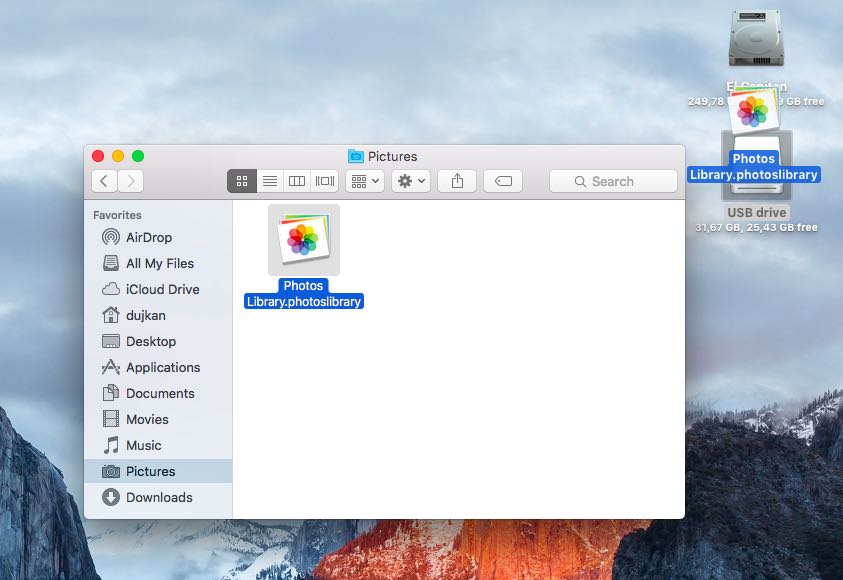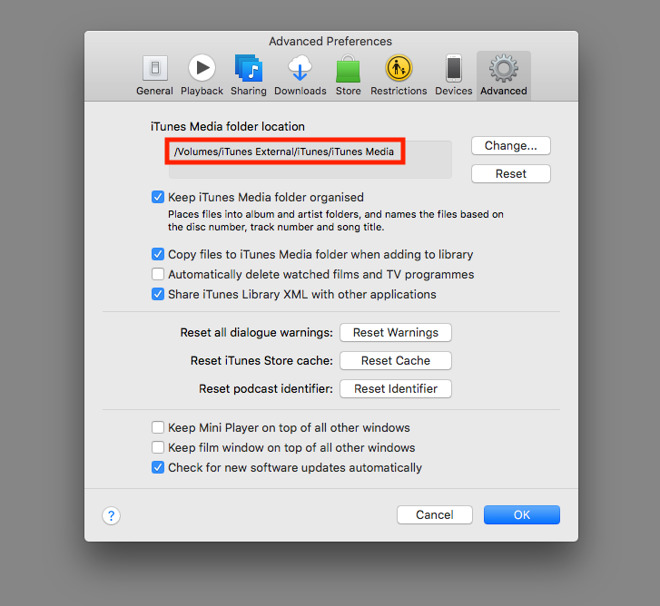Your Photos library holds all your photos, albums, slideshows, and print projects. If your library is large, and you want to free up storage space on your Mac, turn on iCloud Photo Library and use Optimize Mac Storage, or move your library to an external drive.
- Mac Move Photo Library To External Drive
- How To Move Pictures Around
- Move Mac Photo Library To Onedrive
- Move Iphoto Library To Photos
- Copy Photos Library To External Drive
Jan 12, 2020 Apple hides the Library folder by setting a file system flag associated with the folder. You can toggle the visibility flag for any folder on your Mac; Apple just chose to set the Library folder's visibility flag to the off state by default. Here's how to change it.
- Jan 29, 2015 Cool Tip: If you want to transfer your iPhoto Library to another Mac just plug your drive to it and copy your iPhoto library backup to the target Mac’s Pictures folder. Be warned though, this will.
- Apr 04, 2020 Go to System Preferences iCloud Photos Options. Select iCloud Photo Library to turn iCloud back on for your Photos. Disconnect your external hard drive and verify that all of your photos are indeed in the Photo library on the device. Once you are certain that the process is completed, you can drag the Photo library on your Mac to the Trash.
Before you start, be sure to back up your library.
Prepare your drive
You can store your library on an external storage device, such as a USB or Thunderbolt drive formatted as APFS or Mac OS Extended (Journaled).1 Find out how to check the format of your external storage device.
To prevent data loss, Apple doesn't recommend storing photo libraries on external storage devices like SD cards and USB flash drives, or drives that are shared on a network.
Move your Photos library to an external storage device
- Quit Photos.
- In the Finder, go to the external drive where you want to store your library.
- In another Finder window, find your library. The default location is Users > [username] > Pictures, and it's named Photos Library.
- Drag your library to its new location on the external drive. If you see an error, select your external drive's icon in the Finder, then choose File > Get Info. If the information under Sharing & Permissions isn't visible, click , then make sure the 'Ignore ownership on this volume' checkbox is selected. If it's not selected, click to unlock it, enter an administrator name and password, then select the checkbox.2
- After the move is finished, double-click Photos Library in its new location to open it.
- If you use iCloud Photo Library, designate this library as the System Photo Library.
Delete original library to save space
After you open your library from its new location and make sure that it works as expected, you can delete the library from its original location.
In a Finder window, go back to your Pictures folder (or whichever folder you copied your library from) and move Photos Library to the trash. Then choose Finder > Empty Trash to delete the library and reclaim disk space.

Open another Photos library
If you have multiple libraries, here's how to open a different one:
- Quit Photos.
- Press and hold the Option key while you open Photos.
- Select the library that you want to open, then click Choose Library.
Photos uses this library until you open a different one.
Learn more
If you have a permissions issue with your library, you might be able to resolve the issue by using the Photos library repair tool.
1. You can't move your library to a disk that's used for Time Machine backups.
2. If the volume isn't formatted APFS or Mac OS Extended (Journaled), or has been used for Time Machine backups but hasn't been erased, this checkbox will either not be present, or won't be selectable after unlocking. Erase and reformat the drive for this option to be available.
Apple’s new Photos app provides seamless integration between OS X and Apple’s iCloud. But that’s not the case for other storage services like OneDrive.
Apple’s new Photos app provides seamless integration between OS X and Apple’s iCloud. If you use Apple devices, you can easily sync your files and photos between your Mac and iPhone or iPad. The thing about Photos, though, is you might feel locked into the service. It’s almost an all or nothing affair, but I like using other services like Microsoft’s OneDrive. Here’s we’ll take a look at how you can take pictures from the OS X Photos app and put them anywhere.
Apple’s Photos app was introduced in early 2015 with OS X Yosemite. The app was written from the ground up, replaces iPhoto, and puts its focus on simplicity and integration with Apple’s iCloud.
Export Pictures from OS X Photos App into OneDrive
The first you will need to have is the OneDrive client for Mac installed. You can download it from the Mac App Store for free.
Launch Photos from the Dock or press Command + Space key then type:photos then hit Enter. Select any of your photos, and then click File > Export > Export Unmodified Original for Photos.
Mac Move Photo Library To External Drive
Leave the default as is then click Export.
How To Move Pictures Around
Navigate to your OneDrive folder then click Export originals.
Automate the Process Using OS X Automator
This would be a one-off operation; since I know for sure future photos taken on my iPhone would automatically import into Photos, I would have to manually do this every time. Of course, you have the option to have photos taken on iPhone automatically backup to OneDrive. But, suppose I had a point-and-shoot camera, which I also use to import pictures into OS X Photos? I would have to manually export them each time unless I automate the process.
Launch the Finder, and then open your Pictures folder, right-click the Photos Library file, then click Show Package Contents. Right-click on the Masters folder then tag the folder with a color.
Launch the Automator app; press Command key + space key then type:Automator and then Enter. Under Library, select Files & Folders then drag Find Finder Items into the Folder into the workflow window.
In the Search list box, choose Macintosh HD and then the following attributes as described in the screenshot below. Next, drag the action, Copy Finder Items into the workflow window. Click the To: list box and then select OneDrive.
Move Mac Photo Library To Onedrive
Then specify to search for any of the color labels you had assigned, in this case, that will include the Masters folder. Then copy the files with a color label to OneDrive or any other folder you want.
Move Iphoto Library To Photos
Click the Run button to start copying the entire Masters folder to OneDrive. Save the Workflow when you are done so you can use it again in the future.
Copy Photos Library To External Drive
The process certainly requires a little work, but you do get the best of both worlds. I don’t have a problem with iCloud Photos, but I like using OneDrive, too. Especially since I have more storage space than iCloud’s free 5 GB limit. Plus, you can access your Photos Library from virtually any other device this way.
